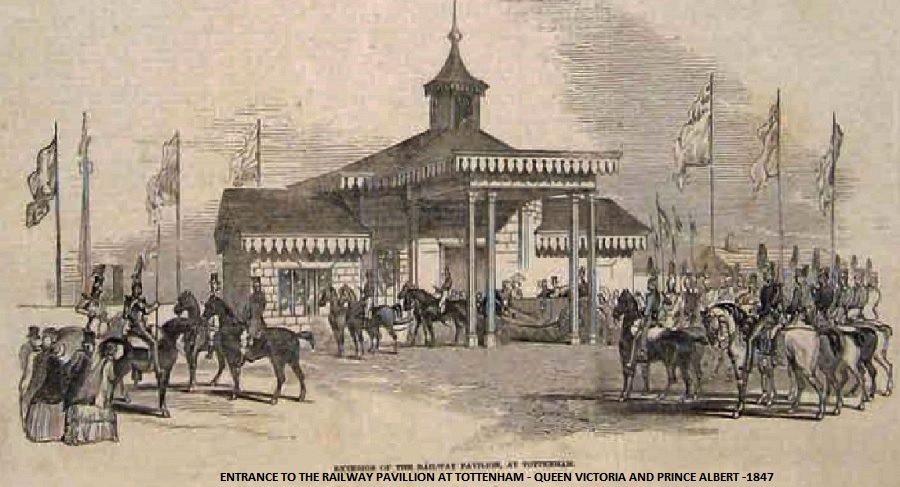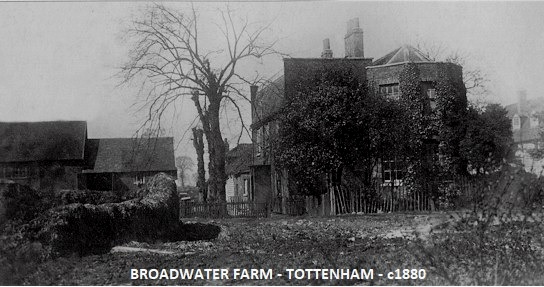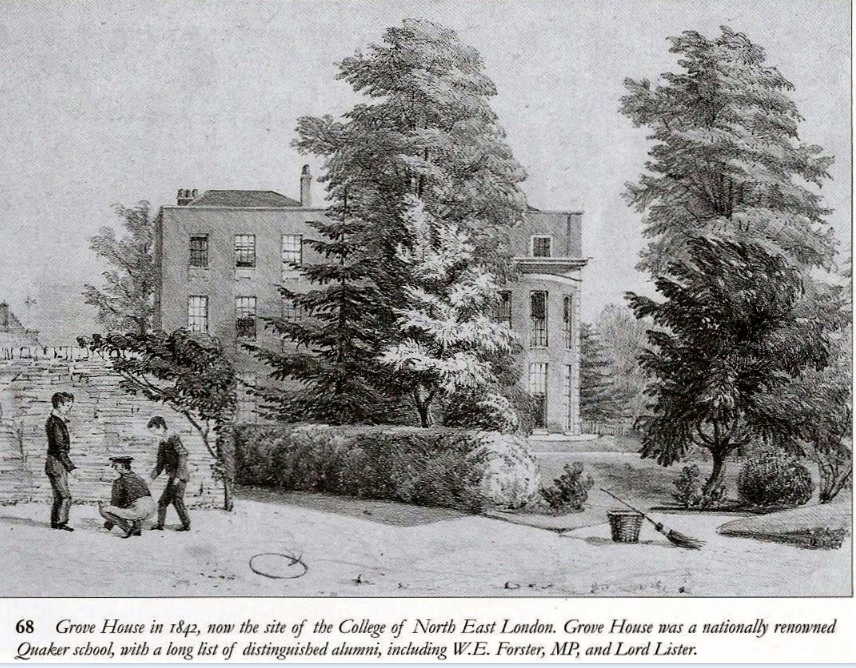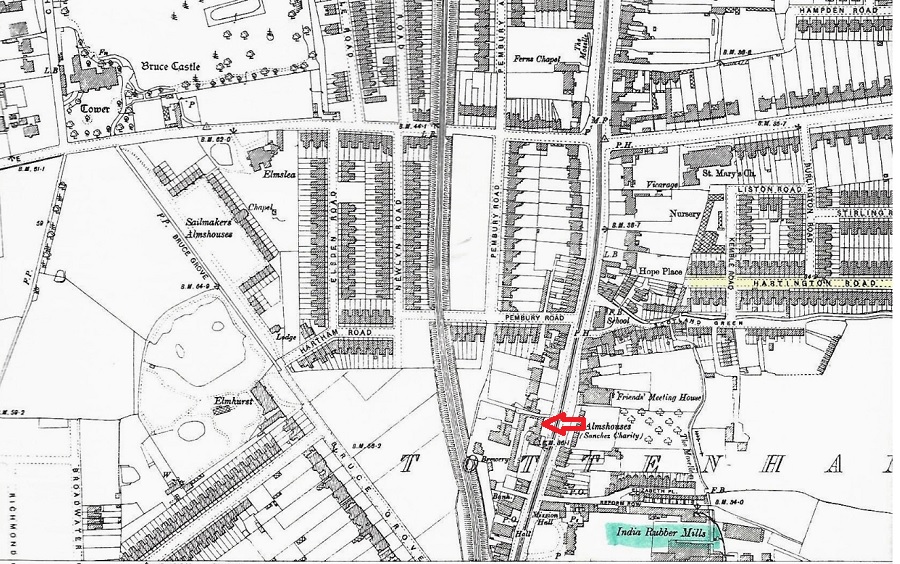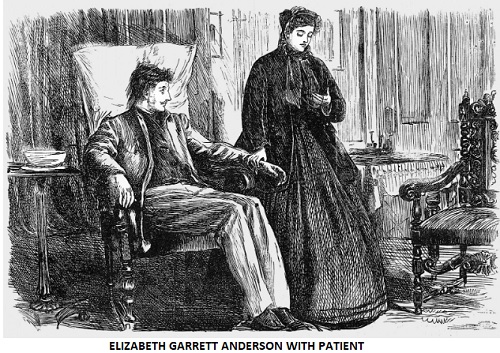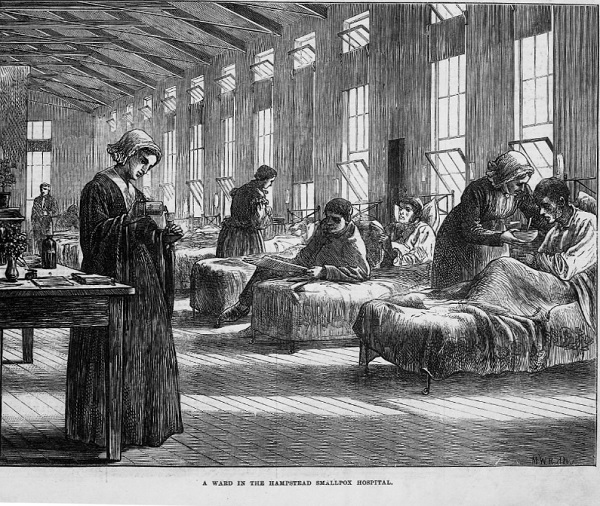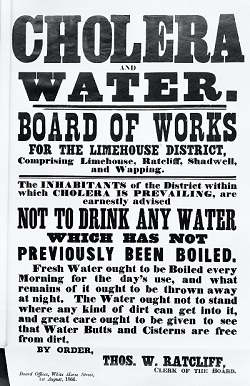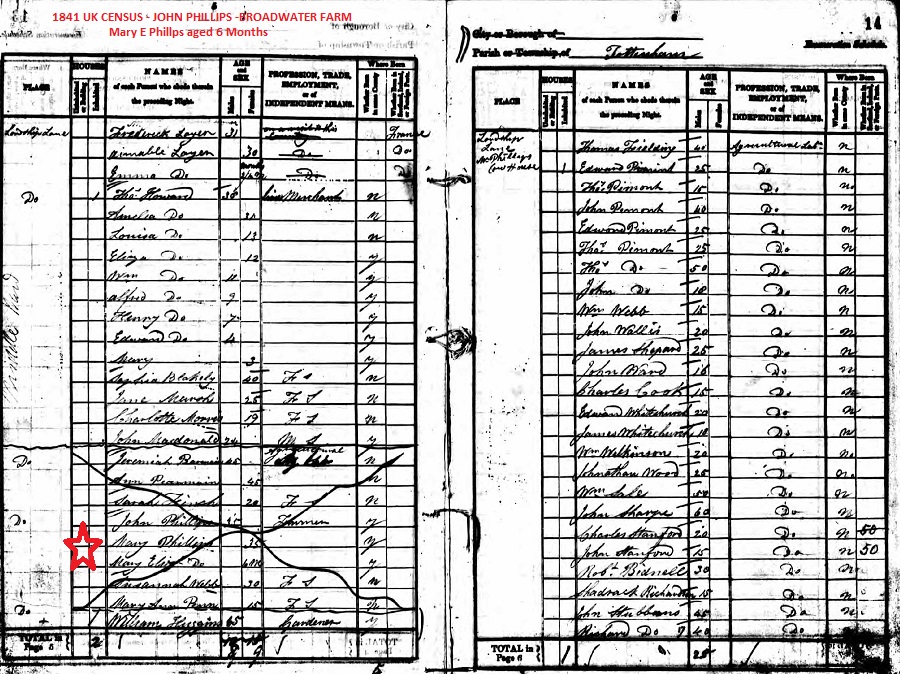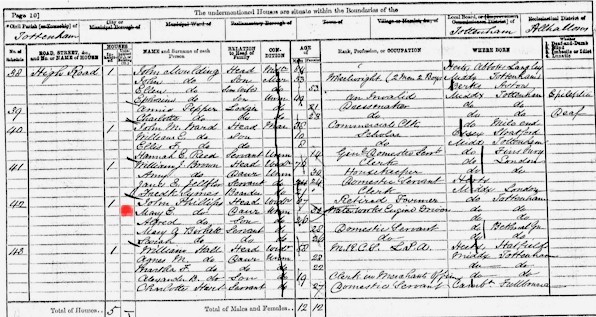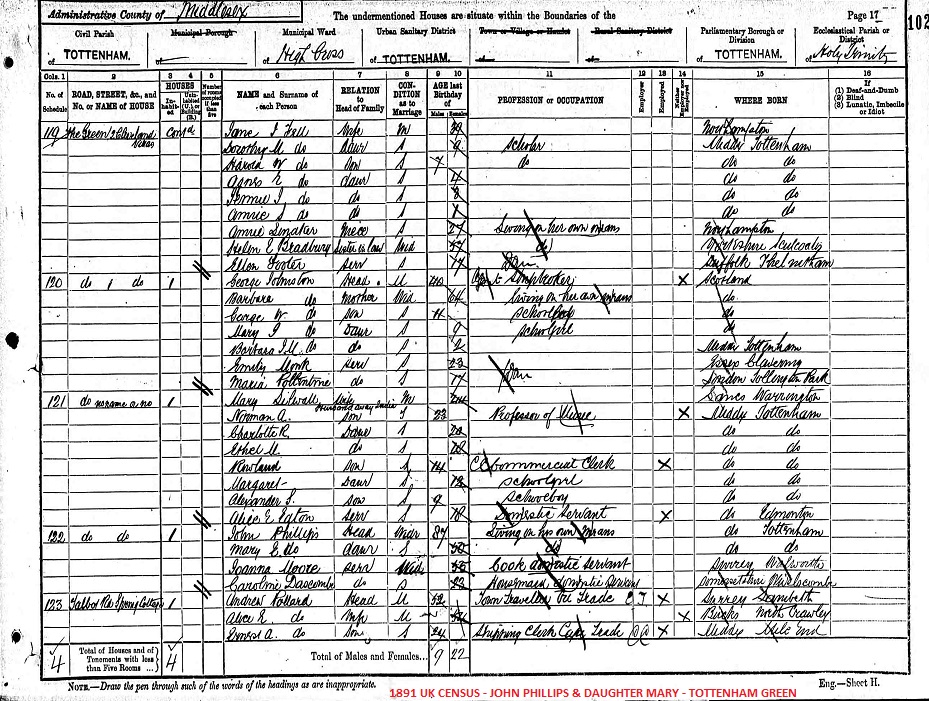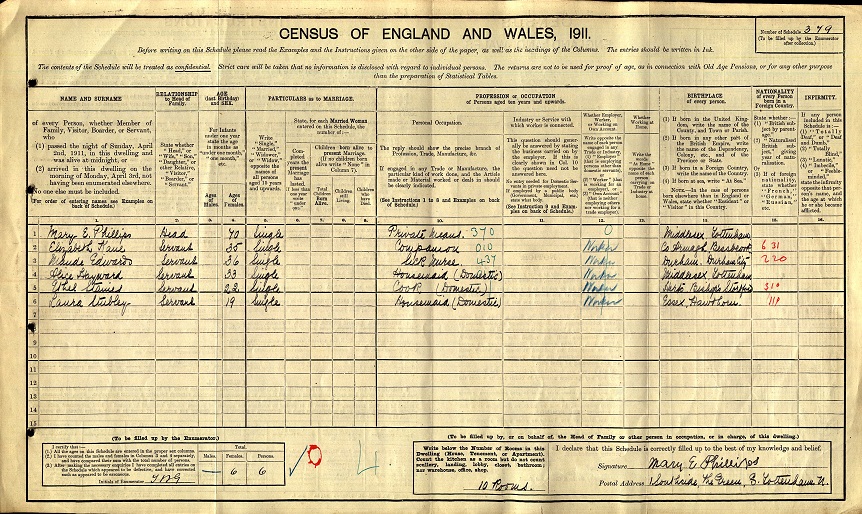|
Grandmother
Phillips, whose portrait I possess, and who died when I was 6 years old,
was the daughter of Daniel Brown, a miller of Luton. Most of the land at
that time was in the hands of a wealthy potentate, and Daniel Brown had
consequently great difficulty in obtaining a vote for Parliament. He
finally obtained one by offering the owner of a plot of land three times
its value as estimated by the potentate referred to; “for every pound
that man has offered I will give three” closed the bargain.
In those days the belief prevailed that the
being dipped in seawater was a preservative from rabies, and the younger
Daniel having been bitten by a mad dog, his father posted with him to
Margate, hired a boat, and had the boy dipped in seawater to within an
inch of his life. The elder Daniel Brown had a conscientious objection
to the custom of the day of carrying firearms as a protection from
highway men. Hitchin, seven miles off, was the market for Luton goods,
and I have heard that one night on his way home after selling his flour
he was set upon by the highwaymen, whose usual manner of attack was for
a man to spring out from either side of the road and for each to seize a
rein. A smart touch from Daniel Brown’s whip caused the horse to plunge
and free itself, and thus its master escaped being robbed; he was the
only one of the eight travellers who traversed the road that night who
had this good fortune, which our great grandfather attribute to his
being unarmed, as instead of fumbling for a pistol when the attack was
made, his hand was free to use the whip. I have also heard that at the
time of the bread riots this ancestor threw out every sack of flour and
corn from his mill to save its being set on fire. His son Daniel, who
survived the dog bite, was a much beloved Uncle, and a visit to him and
Aunt Lydia is amongst the most pleasant memories of my childhood. We
drove all the way from Tottenham to Luton, a distance of 27 miles,
lunching and baiting the horses at St Albans, and coming home after a
few days visit in the same style. Luton was the centre of the straw
plaiting industry, and I learnt the art, but to make enough plait for a
hat or bonnet needed more continuous effort than a child, not forced to
the work, as hundreds of children were, could be expected to accomplish.
The two sons of John Phillips, John and Daniel,
as soon as schooldays were over, chiefly resided with their Uncle, and
helped him in the management and working of the two farms. It was in
those days that the following incident occurred. Michael Phillips’
sister Elizabeth Lambert was on a visit to him, when one evening while
he was from home three men knocked at the door, and on its being opened
rushed into the house. They had masks on their faces, and one, holding a
pistol at Elizabeth Lambert, obliged her to show them the valuables in
the house. Fortunately a boy who was in the house saw the state of
affairs, and tearing out of the back door ran down to the Red Lion
public house in the High Road, where he found some soldiers who returned
with him, and so hotly pursued the thieves across the fields that in
order to escape they dropped most of their ill gotten gains.
Aunt Lambert was so frightened that, although
over 70 years of age, she ran down Lordship Lane to the nearest
residence in Wood Green (a mile).
I do not know whether it was before or after this event that
three Yearly Meeting guests were stopped by three highwaymen just
opposite Bruce Castle at the entrance to Bruce Grove, (then merely a
path across the fields), who robbed them of £90. These men were
afterwards convicted of another similar offence and hanged.
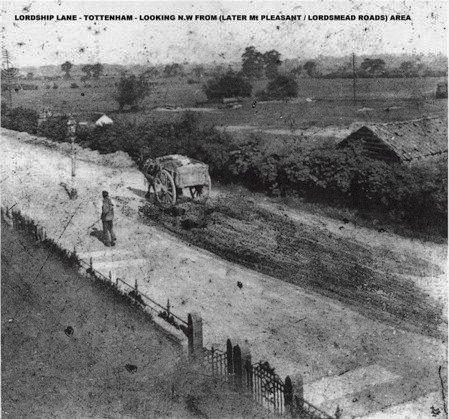

LORDSHIP LANE -PRE DEVELOPMENT- ROAD TOWARDS WOOD GREEN -
EARLY MAP SHOWING BROADWATER FARM IN LORDSHIP LANE
It must have been in those days that stories of
the body-snatchers had birth. After the burial of a body in the
churchyard of the Parish Church it was customary to set a watchman to
guard it, but he was supposed to be in collusion with the snatchers, and
to show the light of his lantern in such a manner that they knew when it
would be safe for them to carry out their gruesome theft. The passing of
their cart was not unfrequently heard at night, and once it was supposed
that daylight made their work dangerous, a corpse was found hidden under
one of the hay stacks. In those days there were no police, and the old
watchman who cried the hours of night only perambulated the more
frequented roads.
After the death of Michael and John Phillips my
father became the tenant of Broadwaters and the owner of Graingers Farm.
To the former he brought his wife in the year 1839. Mary Payne was the
daughter of Peter and Ann Payne, who had at one time resided at
Tottenham, in the house then private but now occupied by West & Co. At
that time, and indeed in my own early days, there were only fields where
there now is the Landsdown Road, and she and my father
*, John Pryor, who lived in Hertford
and was the husband of the Mary Pryor of whom a short biography has been
written (Story of 100 years ago), was a very hale old man, and over 80
years of age would ride from Hertford on horseback before breakfast,
take that meal with his daughter and her family in Tottenham, then go on
to London and transact business, and back to Hertford in the evening – a
distance altogether of 32 miles. I do not know whether it was of this
John Pryor or his father that it had been said that he was the first man
to introduce turnips into the Hertford market. No one would buy any of
the first load, and so he emptied the cartload out and left it, with the
result that he never after had any difficulty in disposing of his
turnips. John and Mary Pryor’s house was called ‘Waterside’. I once
visited it, but the original houses, which surrounded three sides of a
square, has now been formed into three residences.
* Original text suggests
something has been omitted here !
My mother was 13 years of age when her father
gave up his saddler’s business in London and moved to Wellington in
Somersetshire, with his wife and three children, Anne, later married to
J.H Balkwill of Plymouth, Reuben Craven who afterwards settled as a
chemist at Bridgewater, and my mother.
Of our Payne ancestors we know little or
nothing, as after his union with the Society of Friends Peter Payne
seems to have had very little intercourse with his family. He had set up
in business as a saddler in Cheapside, and at that time it was customary
for gentlemen to have holsters for pistols fitted on their saddles, but
Peter Payne, holding the views of his Society against bearing or using
firearms, consistently refused to make saddles with these appurtenances;
but such was his reputation for good work that saddles were bought of
him and sent to other shops to have the holsters fitted. Having secured
a modest competency he gave up his business at an early age, and as has
been stated moved into the country. After Peter Payne’s death my mother
lived with her mother until the latter’s death, shortly after which
time, 1838, she married my father and came to his residence in Lordship
Lane, known amongst a wide circle of relatives, friends and neighbours
as The farm and here all their four children were born.
In my father’s days the house and its
surroundings were a pattern of neatness, and the large stacks of hay
were unequalled anywhere in size and appearance. Now the whole place has
such a changed and shabby look, that I hardly like to point it out to
the rising generation. The farm offered numberless joyful occupations
for children, swings and see-saws in the barn, a Shetland pony to ride,
garden to work in etc.; but the attractions were at their height in hay
time. These joys were shared by many others, the rides down to the hay
fields in the empty carts being especially delightful to the young. The
hay season was a long one, as the whole farm was grass land. My father
laid all the land down in grass shortly after the abolition of the cruel
corn laws. He used to speak with horror of the days when the quarten
loaf cost 1/10 ½, and how his Grand Father had said he was ashamed of
his country when his wagon went out of the yard laden with £100 worth of
corn. My father rejoiced
with the incoming of free trade, and repelled as an insult the
suggestion that he should consider his pocket before the nation. One of
my earliest recollections is that of his pointing out to me, as he drove
to Enfield to record his vote for the free trade candidate, a man with a
large and contrasting small loaf on a pole, and telling me he was going
to vote for the man who wanted the poor to have cheap bread.
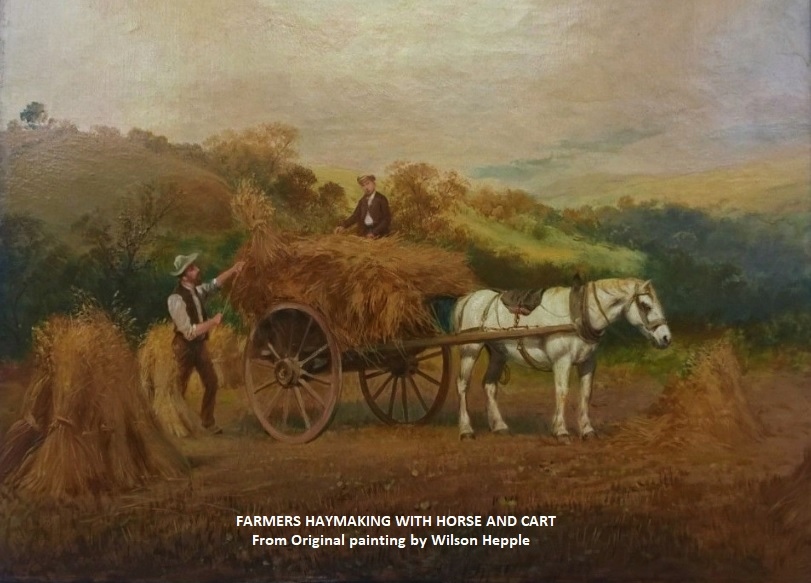
Preparations for haymaking began directly the first wild rose was found
in blossom, and I can remember the joy presenting one to father and his
writing the same night for the five mowers to come up from Royston. The
haymakers numbered nearly 100 and mostly slept on hay in the various
outbuildings. My Mother had before her marriage joined the early band of
Total Abstainers; when she came to Tottenham she found it the practice
to brew and serve beer to the haymakers, but she soon arranged for
coffee to take the place of beer, a change that was warmly welcomed
|
